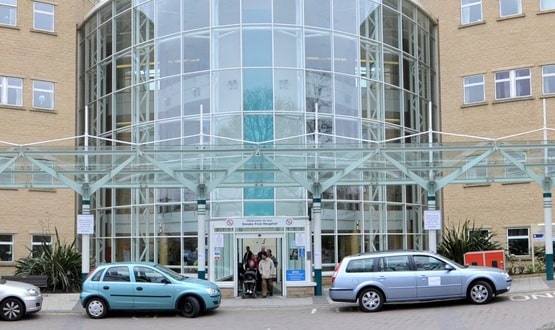Real time data collection changes the game for the stroke patient pathway
- 29 November 2023

An integrated live stroke registry can enable clinicians to stay on the front foot across the entire patient pathway. By Richard Barrett, at Royal Cornwall Hospitals NHS Trust
Clinicians’ ability to capture data so that it can be shared in real time is fundamental to digital transformation for the NHS. However, for many trusts, the cultural shift required for clinical buy-in to make this happen is still a work in progress. Even where it is more advanced, many health IT systems users still take a retrospective approach to data collection, with auditors gathering information from patient notes and populating the fields of the application.
But at Royal Cornwall Hospitals NHS Trust, where Capture Stroke has been supporting the management and delivery of stroke services for nearly 10 years, the principle of data entry at the point of contact is now well established and embedded at the heart of the stroke patient pathway.
The positive impact of a live stroke registry on the clinical and patient experience cannot be overestimated. Real time databases give real time access to information; the visibility this provides across the pathway, from the stroke nurse assessing the patient in A&E to the consultant on the ward, and on to GPs, therapists and supplementary services in the wider stroke community is empowering.
Problems addressed quickly
Having a system that has been developed and structured around the Sentinel Stroke National Audit Programme (SSNAP) certainly helps when it comes to adhering to the requirements of the audit. But it goes beyond the ability to keep up with audit changes and identify breaches more quickly.
The system is able to record all patient interactions with the stroke team, rather than only those patients eligible for the national audit. This means it can evidence the actual resource, human and physical, required to deliver the service. Information recorded by the system has been used in multiple business cases to optimise the number of acute ward beds and to argue for uplifts in clinical staffing.
Most patients will travel through the pathway without issue, in a timely manner, receive their interventions and have their therapies without a problem. But for the small percentage of patients who experience problems, feeding the information back to the clinician in real time means that exceptions in the pathway can be addressed quickly rather than waiting for the next quarterly report to come through from the national audit. Discovering that three months ago your stroke care was suboptimal is never ideal.
Of course, the system depends on clinical engagement with data input. This is as important in the wider stroke community as it is in the acute setting. If information is transparent and available to all stakeholders in real time, providing the ability to look at the trust’s entire cohort of stroke patients, the benefit to system users is constantly reaffirmed – and it makes a powerful case for best practice in automated data collection.
Culture primed to collect data
Essentially, the system enables streamlined data communication throughout the service. As many trusts know all too well, data collection can be a burden for clinicians. But the real time population of the database, and the compiling of detailed diaries of information for every stroke patient, depends on the cultural acceptance of digital data gathering as an integrated part of the clinical process. Mobile interfaces will go a long way to help make this intuitive and automated at the point of entry. And compared with having to trawl through diaries in a mainly paper-based system, the saving in time and efficiency is significant.
Having a culture that has been primed to collect data is a big help in meeting the challenge of overcoming the ‘overhead’ that the task might represent. So too does having a system administrator who is an IT expert but embedded in clinical services, understands care pathways intimately, and can support the clinical software with the interests of care professionals and their patients in mind.
It is still too common in the NHS to find that once it has been implemented, new software is effectively handed over to a clinician with interest in the system but without the technical expertise to manage it. Too late, it becomes clear that they have not done a good job, data gathering is not comprehensive, and the system fails to deliver the benefits it promised.
The secret of the system’s success at the Royal Cornwall Hospitals NHS Trust is that users engage with it as an essential part of a fully integrated stroke patient pathway of the highest quality. It is the glue that holds the service together.





